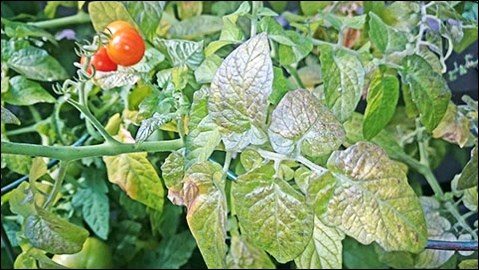There is fall in the air on the prairies. Even though the daytime temperatures are often still warm, at night our temperatures are dipping low enough to stop growth in hot crops like tomatoes and to colour up leaves. It is in this time we are reminded of the change in the seasons. It is the end of summer and the beginning of the season of no growth.
So how does frost occur? There are actually two types of frost — radiation or inversion frost – either of which can ultimately damage or kill growing plants.
A radiation frost happens as a result of temperatures that decrease right down to the ground. This is the type of frost that will often occur first in the fall with a clear sky that allows any heat trapped to rise to the heavens. A cloudy sky will help to keep the warm air closer to the ground that most often will stop the temperatures from dropping to that freezing point. This same effect is generated by gardeners by covering our gardens on those nights that hint at frost. This process will stop the radiation of heat to transfer away from the area surrounding our plants.
Cold air is heavier than warm air, which causes lower areas in your garden to typically freeze before areas that might be a bit higher elevation. On cool nights the frosty air will in fact travel down a slope and then pool at the lowest point – and of course causing frost damage. For temperate climates this is why the ideal location for orchards is on a slight slope, thus gaining valuable time for ripening and picking of fruit prior to damage by frost.
The other type of frost is called inversion frost and it is quite often the type of frost that causes damage to orchards. It is the norm for the warmest air to be closest to the soil surface while the air will continue to be cooler the further away from the ground you travel. An inversion frost is when cooler air is trapped below a layer of warmer air above.
When this type of frost occurs, growers will use a number of tactics to “save the crop.” Wind machines are often used late at night or early in the morning to help mix those layers of air to prevent that cooler air from settling down by the crop. Some valuable crops may even deploy helicopters to achieve a similar air movement. Smudge pots, heater and irrigation systems will also be used to offset that damaging frost.
If sprinklers are being used to offset frost it brings science back into the process. Prior to the temperatures dropping to the freezing point, sprinklers can be turned on. These sprinklers will remain on for the entire night until the temperature will rise. Throughout the night some of the water will freeze while some will not. This process will ensure the temperature will hold at 0 C, as it is a scientific fact that if water and ice are present together the temperature will remain at 0 C as long as both water and ice are present. However, if you are protecting shrubs or trees with this method, there is great risk of a buildup of ice that can do a lot of structural damage.
Learning a bit more about how frost works will help gardeners to choose fall activities. Knowledge helps gardeners make good decisions, like deciding whether or not to cover the tomatoes or just pick the crop when autumn truly arrives. Perhaps understanding frost will help you to foretell the future, or even just the weather.
— Hanbidge is a horticulturist with the Saskatoon School of Horticulture and can be reached at 306-931-GROW(4769); by email at growyourfuture@gmail.com or check out our website at www.saskhort.com.



